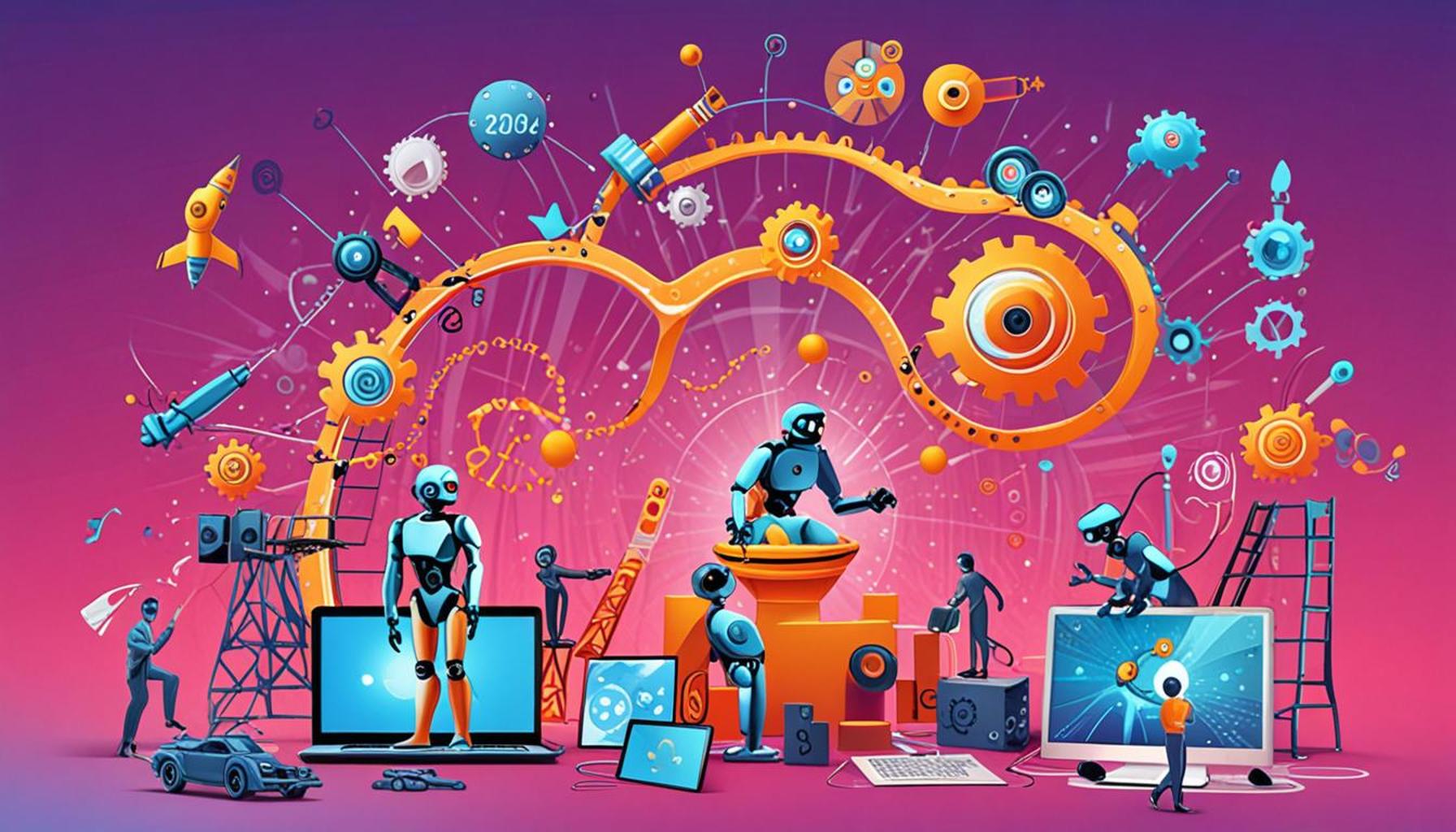Developing Citizen Retention Strategies: The Impact of Marketing Automation on Benefits Programs

The Importance of Citizen Retention
In an era where cities and towns compete not only for resources but also for talent and engagement, retaining citizens has become a strategic imperative. While many municipalities focus heavily on attracting new residents through promotional campaigns and economic opportunities, retaining existing citizens requires equal dedication and innovative solutions. One transformative approach that has emerged is marketing automation, which can create meaningful connections between local governments and community members.
Understanding Marketing Automation
Marketing automation refers to the use of software platforms and technologies to automate repetitive marketing tasks such as email campaigns, social media posts, and lead generation. This technology allows municipalities to communicate with their citizens in a more personalized and streamlined manner. As communities become increasingly diverse, the need for tailored communication solutions is imperative.
Benefits of Marketing Automation in Citizen Engagement
Employing marketing automation tools enhances citizen engagement in three significant ways:
- Personalized Communication: By leveraging data on citizen preferences, municipalities can tailor communications to meet the specific needs of their residents. For example, personalized emails can inform citizens about local events or programs that align with their interests, effectively boosting participation rates and volunteer efforts. Imagine a community that sends out alerts about exciting local farmer’s markets to families interested in organic produce or eco-friendly practices.
- Efficiency: The automation of responses to common inquiries allows local governments to streamline their operations and enhance citizen satisfaction. Automated systems can deliver prompt responses to questions about service hours, public safety updates, or waste collection schedules, which leads to a more responsive and efficient government.
- Data-Driven Insights: By using analytics from marketing automation tools, municipalities can assess the effectiveness of their outreach strategies. This enables them to adapt their programs based on citizen feedback. For example, analysis may reveal that residents are most responsive to certain topics, prompting local government to prioritize those in future communications, thereby enhancing overall engagement.
Fostering Belonging in Communities
As governments work to improve their services through marketing automation, they must also remember that fostering a sense of belonging is critical to citizen retention. Engaged citizens who feel valued and connected to their community are more likely to participate in local decision-making and volunteer efforts. For instance, a city that effectively communicates about community councils or planning meetings can encourage residents to voice their opinions and share their ideas, thus promoting a culture of inclusivity.
In conclusion, by strategically integrating marketing automation into their operations, municipalities can enhance their benefits programs, respond effectively to citizen inquiries, and create an enriching environment for community involvement. This approach not only leads to improved service delivery but also cultivates lasting relationships that contribute to vibrant, engaged communities. As we move forward, it is important to explore the multifaceted opportunities marketing automation presents and how it can be harnessed to inspire citizen loyalty and participation.
YOU MAY ALSO LIKE: Read read another article
Enhancing Citizen Benefits Programs Through Marketing Automation
To develop effective citizen retention strategies, it is imperative to recognize how marketing automation can have a profound impact on benefits programs offered by local governments. While municipalities continually assess how to provide services, ensuring that the benefits programs resonate with the community’s needs is crucial for fostering long-term engagement. The advent of marketing automation streamlines these processes and empowers governments to enhance their offerings strategically.
Targeting Benefits to Citizen Needs
With the integration of marketing automation, municipalities can analyze demographic data and behavioral trends to better understand their population. This understanding allows local governments to create targeted benefits programs that address the specific needs of various citizen segments. For instance, younger residents might be more interested in initiatives focused on job training and internships, while seniors may prioritize healthcare services and recreational programs. Through targeted campaigns, governments can promote these benefits more effectively, ensuring citizens are aware of the resources available to them.
Creating Tailored Messaging and Outreach
Another significant advantage of marketing automation in citizen benefits programs is the ability to craft tailored messaging that resonates deeply with community members. Consider the potential of segmented email campaigns that not only inform residents about new services but also provide testimonials from fellow citizens who have benefitted from similar programs. Such personalized storytelling promotes a strong sense of community and encourages participation.
- Engagement through Social Media: Automation tools allow municipalities to schedule regular posts on social media platforms, keeping benefits programs in the public eye. Engaging visuals and compelling narratives on platforms like Facebook and Instagram can draw attention and invite citizens to explore offerings in more detail.
- Event Notifications: Automated reminders for upcoming events related to benefits programs ensure that citizens remain informed and engaged. Whether it’s a community health fair or an informational seminar about local grants, reminders promote higher turnout rates and foster a proactive citizenry.
- Feedback Loops: Marketing automation can facilitate the collection of feedback through surveys and polls, allowing residents to voice their opinions on existing programs. This continuous loop of communication helps governments refine and enhance offerings based on direct citizen input.
Building Trust Through Transparency
Transparency is fundamental in citizen retention. By utilizing marketing automation tools, municipalities can keep citizens informed about how benefits programs are funded, what the eligibility criteria are, and how to access these services. This clarity establishes trust and encourages residents to take advantage of programs designed to assist them.
In summary, integrating marketing automation into citizen benefits programs offers an opportunity for municipalities to tailor their services to the unique characteristics of their communities, promoting higher participation rates and citizen satisfaction. As local governments leverage data-driven insights to refine their outreach strategies, the potential for enhancing citizen engagement and fostering long-term loyalty becomes apparent.
Enhancing Engagement Through Tailored Communication
One of the key components in developing effective citizen retention strategies is leveraging marketing automation tools to enhance engagement with citizens. By implementing automated communication strategies, organizations can deliver personalized messages that resonate with the individual needs and preferences of their target audience. This personalized approach directly impacts the effectiveness of benefits programs by ensuring that citizens are not only informed but also feel valued.For example, using segmentation techniques in email marketing allows for the customization of messages based on demographics, previous interactions, or expressed interests. Citizens who receive tailored information are more likely to engage with benefits programs, as these communications speak directly to their unique situations. Moreover, regular updates and reminders about available services can significantly improve participation rates and retention.
Streamlining Processes for Improved Accessibility
Another advantage of integrating marketing automation into citizen retention strategies is the opportunity to streamline processes. Automated systems can simplify the application and enrollment stages for benefits programs, making it easier for citizens to access the services they need. By utilizing online portals with automated notifications and reminders, citizens can navigate through complex bureaucratic processes with greater ease, reducing barriers to entry.Furthermore, organizations can utilize tools that collect feedback through automated surveys, enabling leaders to continuously adjust and improve benefits programs. Understanding citizen satisfaction and identifying pain points ensures that services remain relevant, fostering a culture of trust and satisfaction.When combined effectively, tailored communication and streamlined processes position organizations to not only improve citizen retention rates but also build a more engaged and informed community. The integration of marketing automation highlights the potential to create a more responsive and interactive relationship between citizens and their benefits programs. As this relationship strengthens, the overall value of these programs becomes more evident, enticing citizens to remain active and informed participants.
CHECK OUT: Click here to explore more
Leveraging Data Analytics for Continuous Improvement
One of the remarkable aspects of marketing automation is its ability to harness data analytics to drive continuous improvement in citizen benefits programs. By evaluating engagement metrics such as click-through rates, sign-up statistics, and demographic feedback, local governments can glean critical insights into what strategies are working and where adjustments are necessary. For example, if a local government discovers a low sign-up rate for job training programs, analyzing the associated outreach efforts can reveal whether messaging strategies or timing need to be adjusted.
Predictive Analytics: Anticipating Citizen Needs
Further enhancing the impact of marketing automation, predictive analytics allows municipalities to anticipate the evolving needs of their constituents. This data-driven approach relies on historical patterns to project future demands. For instance, if there is a noticeable uptick in requests for food assistance during particular months, local governments can proactively schedule community outreach initiatives and allocate resources accordingly. By anticipating these needs, cities not only demonstrate responsiveness but also cultivate a stronger relationship with citizens, who feel their concerns are valued.
- Personalized Reach: With predictive insights, municipalities can send personalized messages to residents based on their previous interactions with benefits programs. If a citizen previously enrolled in a health seminar, targeted emails about related health benefits can be dispatched to encourage continued participation.
- Event Planning Based on Data: By analyzing past attendance at community events, local governments can improve future gatherings, ensuring they align with citizen interests. This involves selecting topics that resonate with specific demographics and enhancing the overall experience.
- Resource Allocation: Data analytics help in making informed decisions about budget distribution for various programs, ensuring resources are directed towards the benefits most needed by the community.
Integrating Multi-Channel Approaches
Citizens today engage through various channels, and marketing automation enables a seamless multi-channel approach that can boost awareness and participation in benefits programs. By utilizing email, social media, SMS notifications, and community apps, local governments can ensure their messages reach audiences on the platforms where they are most active.
For instance, a recent study found that municipalities that employed a combination of SMS alerts and social media marketing increased the participation rates in their programs by over 30%. This not only enhances program visibility but also establishes a more dynamic communication framework where citizens can interact and provide feedback in real-time.
Optimizing the Citizen Experience
The integration of marketing automation doesn’t stop at promoting benefits programs. It fundamentally transforms the citizen experience. Municipalities can streamline application processes through online platforms, allowing residents to access information and apply for benefits from the comfort of their own homes. Automated follow-ups can also aid in guiding applicants through necessary paperwork, reducing the bureaucratic burden often associated with public benefits.
In addition, providing a centralized online resource hub powered by automation can ensure that citizens have 24/7 access to information about benefits programs. This enhances not only accessibility but also empowers citizens to make informed decisions regarding their participation in local initiatives.
As local governments continue to leverage marketing automation in developing citizen retention strategies, the need to focus on an integrated and data-informed approach becomes increasingly evident. These advancements keep citizen benefits programs relevant and compelling, ensuring that municipalities can meet the evolving needs of their communities effectively.
ADDITIONAL INSIGHTS: Expand your understanding here
Conclusion
In today’s rapidly changing social landscape, the role of marketing automation in developing effective citizen retention strategies for benefits programs cannot be overstated. By leveraging data analytics and predictive insights, local governments are not only enhancing program outreach but are also fostering meaningful connections with their constituents. The ability to tailor communications and anticipate community needs serves to maximize participation, ultimately benefiting both citizens and the municipalities that serve them.
The integration of multi-channel approaches further exemplifies the shift toward a more citizen-centric model. By engaging residents through their preferred platforms—whether it be social media, SMS, or community apps—municipalities can significantly increase awareness and involvement in essential programs. This personalized engagement is essential to create a holistic citizen experience, where services become not just available but accessible, efficient, and inviting.
As local governments continue to embrace these advanced strategies, it is vital to maintain a commitment to continuous improvement. Ongoing assessment of program performance and citizen feedback will illuminate the path forward, ensuring that benefits programs remain relevant in addressing the evolving challenges faced by communities. Municipalities that prioritize marketing automation will not only enhance the quality of services offered but will also cultivate a lasting trust between citizens and their government. This blend of technology and public service represents a promising future for community engagement and retention—a future that reflects the needs and aspirations of the people they serve.


